MO Tested: KTM PowerParts Wave Brake Discs

More braking power and significantly less weight makes for an upgrade value
If I was happy with how EBC brake pads improved the KTM 790 Duke’s binders, why would I install the PowerParts Wave Discs? First, I was curious if the discs really would deliver KTM’s claimed 25% increase in braking power, and after our recent trip to Laguna Seca, where I found myself coming into the corners at increasingly higher speeds and requiring more and more from my brakes throughout the day, I realized that perhaps more power at the lever would be a good thing. So, I decided to check out the waves, front and rear.
2019 KTM 790 Duke Review – First Ride
Live With This: 2019 KTM 790 Duke Long-Term Review
MO Tested: Factory Pro Shift Kit Review
Like the OEM discs, the PowerParts Wave Discs are sourced from Galfer. However, they are very different units. While both sets of front discs are 300mm items (Galfer does have a 320mm kit, though.), they offer some structural differences, but first, we’ll cover the similarities. Both discs use the same 420 high-carbon stainless steel for the swept area of the disc. Both are laser cut instead of stamped, which allows for more consistent shapes. Although they receive different grinding treatments, both discs are put through the same parallel double disc grinding machines. (The PowerParts discs receive a slightly coarser grind, according to my contact at Galfer.)
If the standard discs and the PowerParts ones have so much in common, what explains the performance and price difference? First, cutting wave discs with their non-uniform shape and irregular inner holes takes the laser cutting machine much longer than simply cutting circles. The reasoning behind the waves are twofold: Weight is reduced on the outer edges and heat dissipation is assisted by the larger surface area of the waves. Additionally, the irregular shapes cut in the swept area also help with heat dissipation by getting rid of the heated gasses generated during friction between the brake pads and the disc. The round holes in the OEM discs tend to capture the gasses and carry them around as the disc rotates, much like a rider in a basket on a ferris wheel. The irregular holes create turbulence that causes the hot gasses to be scavenged by the neighboring cooler air as the disc turns. Also, while the same stainless steel is used for the discs, the waves receive a different heat treating process to allow their reduced amount of material to cope with the additional heat generated by performance braking.
Aside from the claims of increased braking power, the difference in weight between the PowerParts discs and the standard ones pays dividends in four ways. First, lowering the bike’s overall weight is always a good thing. There is less mass to accelerate and then slow down again. Second, more than just the straight-line acceleration is affected. Lower weight on the wheels makes it easier for them to accelerate/decelerate rotationally. Third, less rotating mass in the wheels means there will be less gyroscopic resistance to steering inputs, allowing the bike to steer quicker. Finally, there will be less unsprung weight, which makes the suspension’s job easier. These benefits are the reason performance-minded riders are willing to spend thousands of dollars on lightweight forged aluminum or carbon fiber wheels. While lighter brake discs won’t make the same level of difference, they do deliver these results to a lesser degree.
So, with that in mind when I got the stock discs off the 790, I compared their weight to that of the waves. The savings was more than I would have initially expected. The stock discs tipped the scale at 64.87 oz. while the wave disc weighed in at 41.76 oz. The difference of 23.11 oz. means that each disc saves 1.44 lbs – a 2.88 lb total savings for the front wheel! That’s pretty significant. A quick test with a magnet points out that a good portion of the weight savings comes from the use of aluminum carriers on the waves instead of the steel of the stockers. (Even more weight could have been saved if the buttons holding the disc to the carrier were aluminum instead of steel.) The difference for the rear disc, which doesn’t have a carrier, wasn’t nearly as pronounced, delivering a total reduction of 3.57 oz. (29.88 oz. – 26.31 oz.). Still, it’s something.
Swapping the discs is a task that any home mechanic with the proper tools (including a torque wrench) can handle. If you can pull your wheels for a tire change or swap your own brake pads, you can certainly upgrade your discs.
Even while I was still bedding in the EBC Double-H pads and going easy on the brakes, I could feel the difference in the waves’ stopping power. At partial application, I could generate the desired amount of deceleration from a lower pressure at the lever than with the stock discs. Crank the speed up and start diving into corners hard on the binders, and the improved bite of the friction surface is apparent. Not only are the KTM’s brakes more powerful, but they also deliver more feel. Having better feel along with less lever effort means that I have more brain power available to focus on the rest of any particular corner. Although I’d be hard pressed to quantify the improvement in braking as specifically as 25%, I really wish I’d had these Galfer Wave Discs mounted during our recent Laguna Seca track day.
The lighter total weight of the front wheel has a more nuanced effect. I honestly can’t tell the difference in the 790’s acceleration from a mere three pounds of weight loss – even in a wheel. However, when combined with other fat-trimming upgrades to the bike, the overall effect can become significant. (That’s why race teams spend so much money on carbon fiber bodywork, titanium fasteners, and the like.)
Now, when it comes to responsiveness to steering inputs, I did notice that turn in was slightly quicker. Much in the way that a different tire profile can speed up or slow down a bike’s steering, I found that, on my first canyon ride, I tended to oversteer on my corner entries until I adjusted to the lessened effort required to initiate a turn at speed. However, I need to say that this was a slight change to an already quick-steering motorcycle.
The end result of swapping the OEM front discs with the PowerParts Wave Discs is an impressive increase in braking performance at all levels of braking power. The effort required to achieve maximum braking for panic stops on the street or fast lap times on the track is significantly reduced while offering better feel at the lever. Combined with the nearly 3 lb. of weight loss on the front wheel, I feel that the improvements are well worth the $458 ($229 each) investment, though I would encourage you to also upgrade from the stock pad compound to something comparable to the EBC Double-H pads I used. As far as the rear disc is concerned, the payoffs are less tangible. More braking power was not needed in the rear, and I didn’t notice any more feel from the pedal. However, the wave disc does shave a couple ounces and visually matches the front discs. While I personally believe it is worth the expense, I leave it up to you as to whether you’d spend the $146 on the rear disc.

Like most of the best happenings in his life, Evans stumbled into his motojournalism career. While on his way to a planned life in academia, he applied for a job at a motorcycle magazine, thinking he’d get the opportunity to write some freelance articles. Instead, he was offered a full-time job in which he discovered he could actually get paid to ride other people’s motorcycles – and he’s never looked back. Over the 25 years he’s been in the motorcycle industry, Evans has written two books, 101 Sportbike Performance Projects and How to Modify Your Metric Cruiser, and has ridden just about every production motorcycle manufactured. Evans has a deep love of motorcycles and believes they are a force for good in the world.
More by Evans Brasfield



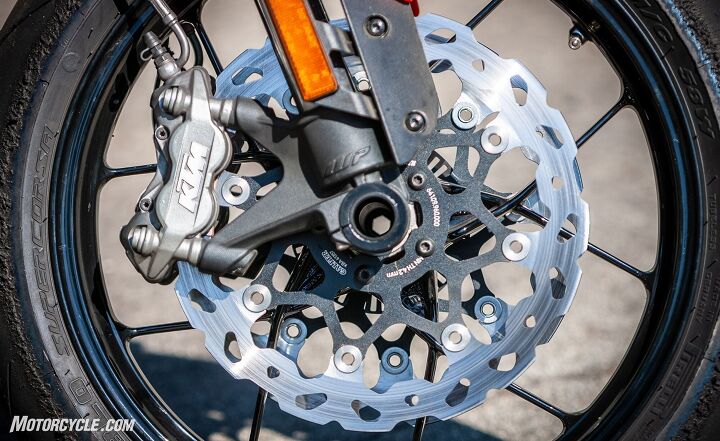
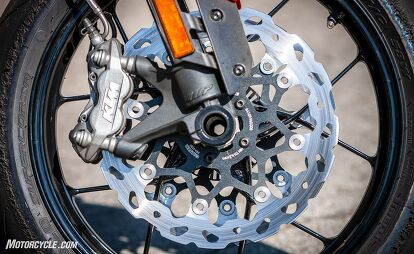














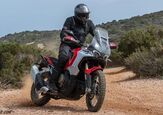
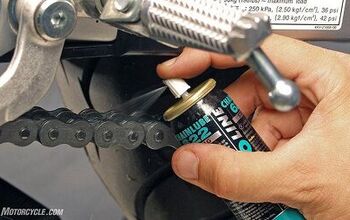
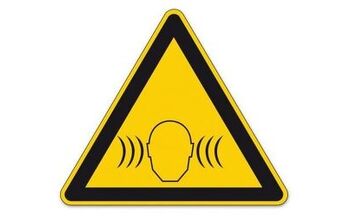
















Comments
Join the conversation
Surprised the bike did not come with the waves. Most new bikes with aspirations of being in some way "premium" have them.
Current 790 is not marketed as a premium bike, but rather more price-point (don`t mean that as a diss of the 790, but numerous component choices bear this out). Besides, considering the margins they make on accessories, it`s in the manufacturers' interest to have you wanting, and buying, their stuff